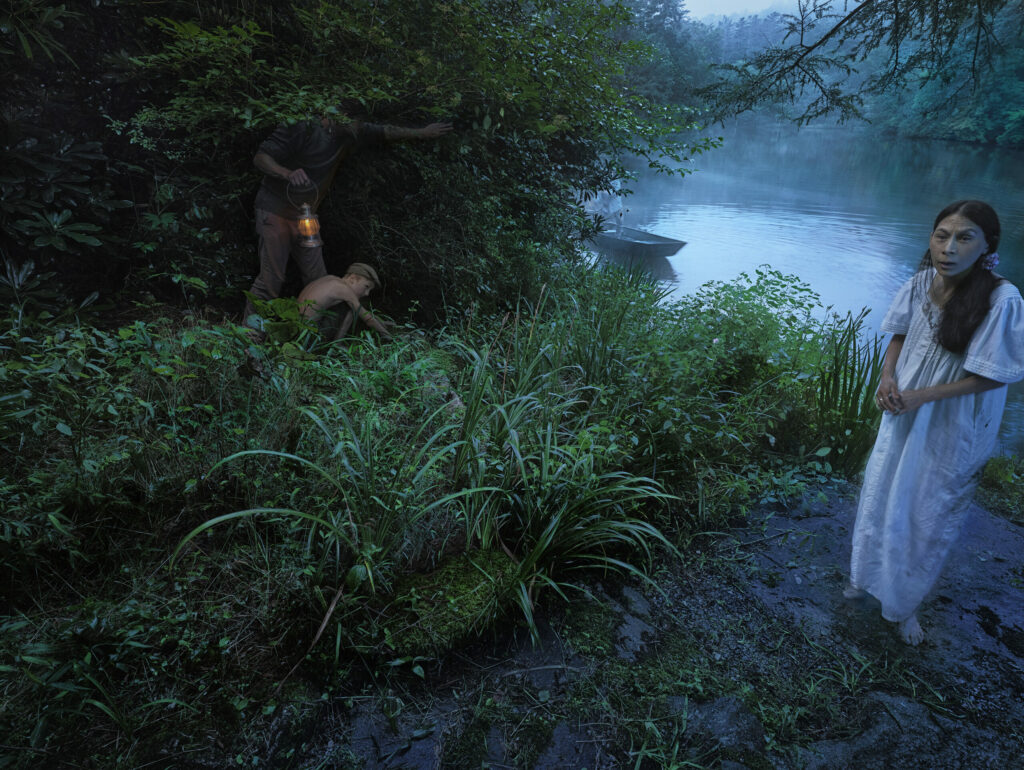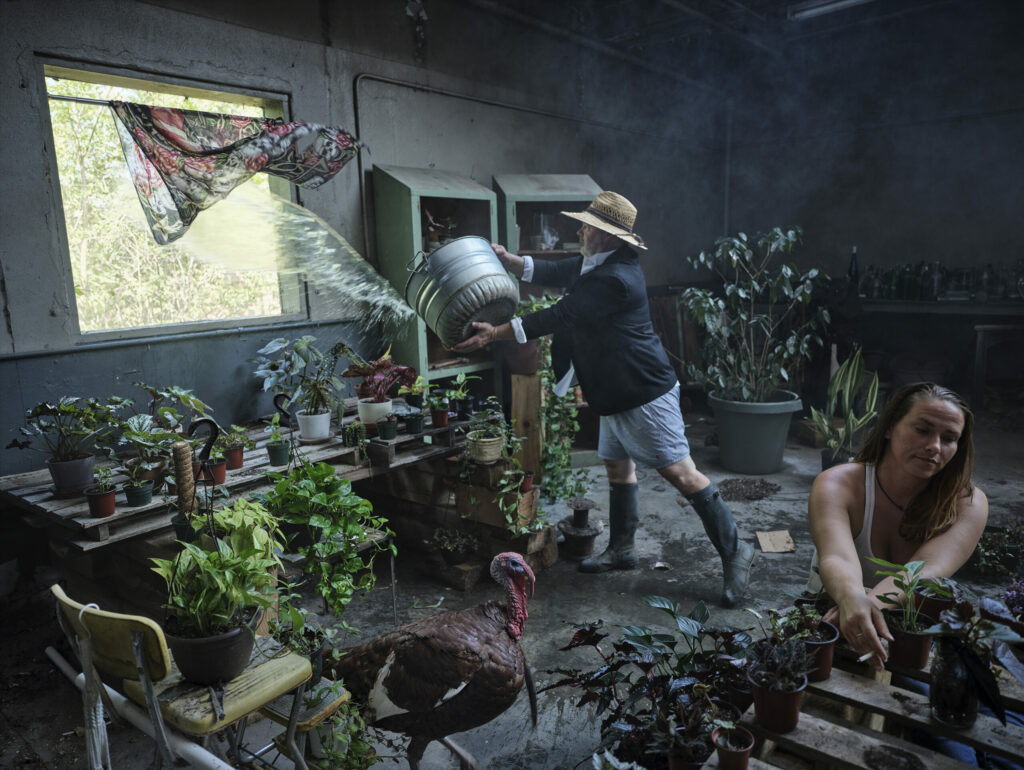A visual storyteller at heart, Jim Fiscus has pioneered a distinctive, cinematic style of photography that is capable of portraying complex narratives within a single frame. With an element of magic realism, his photographs elevate seemingly ordinary or overlooked places into extraordinary scenes full of unusual detail. Currently on view at the Georgia Museum of Art, the exhibition “Where Shadows Cross” features 13 elaborately constructed photographs that suggest stories through shadow and light.
Specializing in conceptual advertising portraiture, Fiscus’ professional career in photography has led him to produce images for household names such as Levi’s, Nike and Samsung over the last 30 years. His artful style is even interwoven across several streaming platforms, including Showtime, HBO, Netflix and Disney, through campaigns for “Dexter,” “Kidding,” “Billions,” “Penny Dreadful,” “Tidelands,” ”Homeland” and others.
At the onset of the COVID-19 pandemic in 2020, when the world nearly ground to a halt and commission work slowed down, Fiscus suddenly found himself with both the time and headspace necessary to focus on personal projects. He soon began embarking on a series of road trips with a camper and a friend, and his new exhibition shares several of the single-frame stories he created along the way.
“They’re all found locations populated with found people to illustrate a story that hopefully doesn’t really conclude for you,” he says.

Following the gravitational pull of places that embody a special sort of strangeness, Fiscus would observe how lighting naturally changed and interacted with objects within the setting over the course of time. Once he found a location that spoke to him, he’d return during peak lighting to direct real people—often strangers he had met serendipitously—within meticulously orchestrated scenes set with props.
“The light itself is a character, or a presence, within each of these stories, and so I’m not altering it, I’m waiting until the time when it’s beautiful,” says Fiscus. “Usually when it’s beautiful, it’s kind of dim… It’s a peculiar time of day.”
While a few of the images were captured by a single shot, many are the result of a bit of post-production wizardry. During photo shoots, Fiscus often takes multiple shots with different poses and lighting variations to create a library of images from which he can later fuse together a completed picture. Each title card includes a date and duration of time, ranging from one minute to well over an hour, to acknowledge the specific environmental conditions and process required to achieve the final image.
The exhibition’s title, “Where Shadows Cross,” carries multiple meanings. Because the locations are often lit with multiple sources of illumination—some visible as part of the scene and others hidden outside of the frame—shadows may criss-cross or subtly contradict each other. In addition to referencing his creative process and lighting technique, the idea of “Where Shadows Cross” also represents the connectedness between people and objects as their shadows come into contact with each other.
In his exhibition statement, Fiscus says, “A single source of light casts parallel shadows that can also overlap or even run away from each other. Multiple separate points of illumination make the shadows cross and form patterns. In these pictures the shadows partake in a game with all other shapes. Shadows are a seminal part of the composition. These forms ground the eyes or guide it forth to another area of the frame, to other shapes. In still images they reveal motion. The anchor point in this entire series is made of shadows, which keep the balance and bond everything together.
“The crossing of shadows embodies the time spent with a person—the days it takes to make these images. In a diner or under a streetlight, you cross shadows with somebody you just met, and you are getting to know them.
“Shadows stand for my attraction to people who live in places normally unseen. There are people left behind in the shadows against their will, but also those who chose to be there—an entire world we either avoid or experience only superficially. I choose the shadows.”
While shadows are an integral part of every image, Fiscus also puts a considerable amount of thought into creating shapes. Every line, angle and instance of symmetry feels intentional, not unlike hitting pause on a film with a well-crafted set.

Though Fiscus begins each shoot with an initial concept and structure in place, he remains open to improvisation and lets the image shift and unfold naturally through the participation of the subjects. Narratives are intentionally left ambiguous and inconclusive, which allows for multiple interpretations and the freedom to imagine both the past and future of depicted characters.
“I’m trying to create a framework that allows us to look at things differently,” says Fiscus.
Each scene is accompanied by a title card that shares intentions, narrative prompts and other interesting behind-the-scenes details. Several of the images also make art historical references, which provides another framework for interpretation.
“Where Shadows Cross,” which was curated by the museum’s Parker Curator of Russian Art, Asen Kirin, will remain on view through Oct. 8. Fiscus will offer an artist talk on Sept. 7 at 5:30 p.m. The exhibition will additionally be highlighted during 90 Carlton: Autumn, a quarterly reception hosted by Friends of the Georgia Museum of Art, on Sept. 15 from 6:30–8:30 p.m.
Like what you just read? Support Flagpole by making a donation today. Every dollar you give helps fund our ongoing mission to provide Athens with quality, independent journalism.










